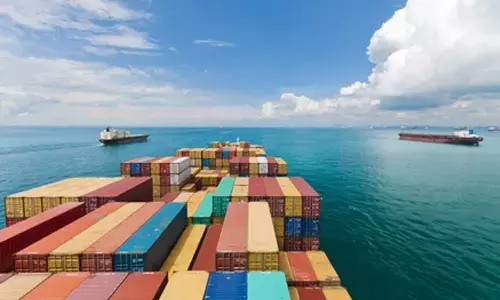What is El Niño?

El Niño is a prolonged warming in the Pacific Ocean sea temperatures. El Niño in Spanish means, “The Christ child”. It is so called because of periodic warming near the pacific in South America, which is often noticed around Christmas.
El Niño is a prolonged warming in the Pacific Ocean sea temperatures. El Niño in Spanish means, “The Christ child”. It is so called because of periodic warming near the pacific in South America, which is often noticed around Christmas. The NOAA of US defined it as a three month average warming of at least 0.5 degree centigrade (0.9 degree F) in a specific area on the east-central tropical Pacific Ocean. It happens at irregular intervals of 2-7 years and lasts for nine months to two years; its average period is five years. When the warming occurs for 7-9 months it is referred as El Niño “conditions”; and if its duration is longer it is termed El Niño” episode”.
El Niño is the warm phase of El Niño southern oscillation which is associated with a band of warm ocean water that develops in the central and east central equatorial pacific (ESNO). It refers to the cycle of warm and cold temperatures as measured by the sea surface temperature of the tropical central and eastern Pacific Ocean. It is accompanied by high air pressure in the west pacific and low air pressure in the east pacific.

The cold Humboldt current which flows along the west coast of South America towards the north is pushed back by warm water masses. From southeast Asia, nobody knows why this happens. The winds blowing over the pacific changes dramatically as a result heavy rainfall and floods occur in places that were earlier dry, while in the hot and moist regions the fertile land dries up, crops wither, and people starve.
Pros and cons
- El Niño creates increased rainfall across the east central and east Pacific Ocean.
- In South America the effects of El Niño is direct and stronger.
- It sustains large fish population, which in turn sustain abundant sea-birds whose droppings support the fertilizer industry.
- The world’s largest fishery collapsed due to over fishing during the 1972 El Niño Peruvian anchoveta reduction.
- The ESNO variability contribute success to small fast growing species along the Peruvian coast, as periods of low populations removes predators in the area.
- Some people believe that the ice storm in January 1998, which devastated few parts of New England, southern Ontario, and southern Quebec was caused by El Niño warming effects.
- It warmed Vancouver during 2010 winter Olympics, such that Vancouver experienced warmer than average winter during the games.
- Since 2000 a number of events have been observed (in 2002-2003, 2004-2005, 2006-2007 and 2009-2010) but a strong El Niño has not occurred since 1997.
- The climate prediction centre in September 2014 issued an “EL Niño watch” stating 60-65% chance of El Niño development during winter.














